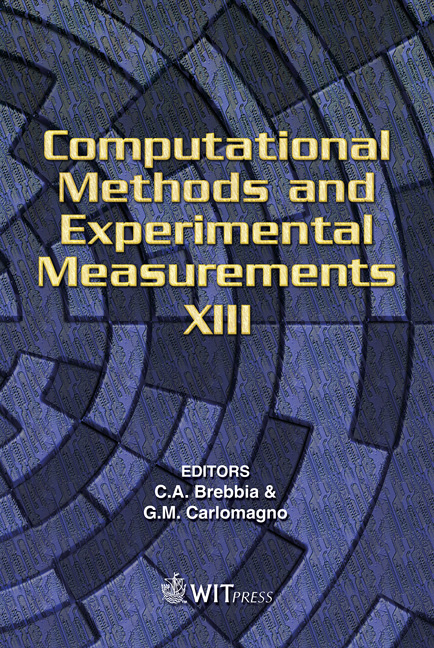Effect Of Zr Addition On The Fatigue Strength Of Cu-6Ni-2Mn-2Sn-2Al Alloy
Price
Free (open access)
Transaction
Volume
46
Pages
10
Published
2007
Size
1,531 kb
Paper DOI
10.2495/CMEM070221
Copyright
WIT Press
Author(s)
M. Goto, S.-Z. Han, C.-J. Kim & N. Kawagoishi
Abstract
Fatigue tests of Cu-6Ni-2Mn-2Sn-2Al alloy smooth specimens were carried out to clarify the effect of trace Zr on the fatigue strength. The growth behaviour of a major crack, which led to the final fracture of the specimen, was monitored to study the physical basis of fatigue damage. When stress amplitude was less than σa = 350 MPa, the fatigue life of Zr-containing alloys was about two times larger than that of alloys without Zr. When σ a > 350 MPa, increments of fatigue life due to Zr decrease with an increase in σ a and the increments were negligible at σa = 400 MPa. Increased fatigue life due to Zr addition resulted from an increase in crack initiation life and microcrack growth life. The growth rate of a small crack was determined by a term, σ a nl, independent of Zr addition. The effects of trace Zr on fatigue strength were discussed with relation to the initiation and propagation behaviour of a major crack. Keywords: fatigue strength, small crack, crack growth rate, plastic replication technique, Cu-Ni-Sn alloy systems. 1 Introduction The substitutes for Cu-Be alloys with a high production cost have been developed. Cu-Ni-Sn alloy systems have been regarded as potential substitutes for Cu-Be alloys. Among the Cu-Ni-Sn alloy systems, Cu-9Ni-6Sn alloys [1–4] are considered to have the best strength/ductility combination. When hot rolling is applied to produce sheet products, hot cracking problems occur [5] as a result of Sn-rich segregates formed during the solidification in castings. Cu-6Ni-2Mn-
Keywords
fatigue strength, small crack, crack growth rate, plastic replication technique, Cu-Ni-Sn alloy systems.





